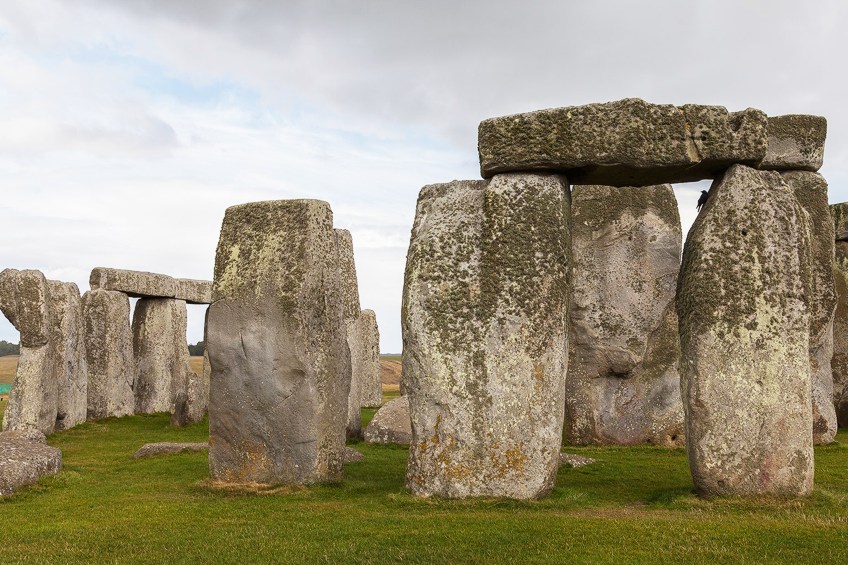Neolithic Art – Explore Fascinating Neolithic-Period Art
You have surely heard of prehistoric art but not many people have come across the sub-category of prehistoric art called Neolithic art. The Neolithic period is considered to be the most important period in prehistory for the development of the modern human species. This article will introduce you to Neolithic artwork and include all you need to know about this period.
A Neolithic Art Definition
Understanding prehistory can be very confusing to your not-so-local archaeology student but noting its impact on art history and the development of artistic expression as we experience it today is incredibly important. The Neolithic period is marked by the period between 10,000 and 2,000 BCE.
It is understood simply as the period of the Neolithic Revolution characterized by the development of technology to aid food harvesting and the domestication of animals.
So, what is Neolithic art? Looking at the Neolithic art definition, one can easily say that art or visual imagery produced by humans dating back to this period is classified as Neolithic art but the art within this period is much more complex than a simple categorization according to time. Let us take a closer look at the developments of the time to better grasp the context in which art was produced by looking at the characteristics of Neolithic art below.
Characteristics of Neolithic Art
Aside from the classification by period, art from the Neolithic age is marked by the emergence of husbandry and farming. This meant that the previous way of living through the hunter-gatherer complex was no longer of importance to the survival of humans and there needed to be more efficiency in aiding survival. The predominant forms of Neolithic art include the creation of sculpture out of terracotta clay, which is now identified as ancient pottery.
Another characteristic of Neolithic artwork includes hand stenciling, mobiliary art, the construction of temples and shrines, monumental sculpture, and megalith art.
The focal point of the Neolithic era was centered on the cultivation of crops to make communities feel more secure. This period also saw the rise of many farm settlements, which coincided with many effects. The population saw a steep increase, from approximately eight to 65 million within 5,000 years.
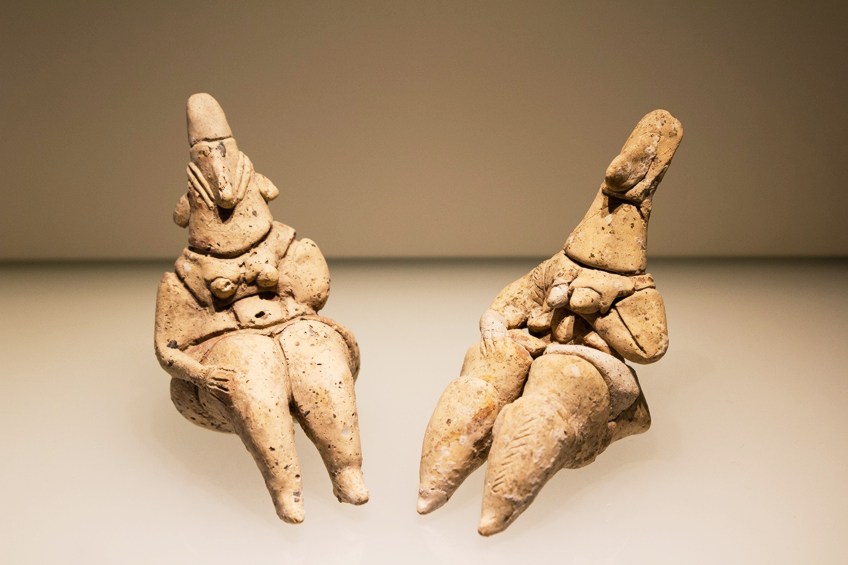
During this time, people formed communities and began grouping as a protective mechanism, which resulted in more efforts to mark “territories”. Because humans became more territorial, they also became more organized and hierarchy played a dominant role in the development of belief systems, which had an impact on the kind of art made during this period.
The primary mode of art practice revolved around sculpture and the introduction of large-scale three-dimensional works. Below is a summary of the characteristics of Neolithic Art.
Summary of the Characteristics of Neolithic Art
- Dominant art form includes sculptural works such as pottery
- Megalithic structures
- Ceramics
- Paintings
- Design motifs on sculptures and paintings.
- Symbolic/ritual figurines
- Large-scale engravings
- Geometric shapes and patterns
- Focus on decoration and design as an art form
Why Is the Neolithic Period So Important?
The Neolithic period is extremely important due to its reputation as being the beginning of civilization itself. When one imagines civilization, one also imagines rapid development in all aspects of human existence, including religion, cultural practices, language, technology, and farming.
Furthermore, it is important to recognize that the Neolithic period marked a widespread era of development and “progression” that formed the basis of modern-day technologies.
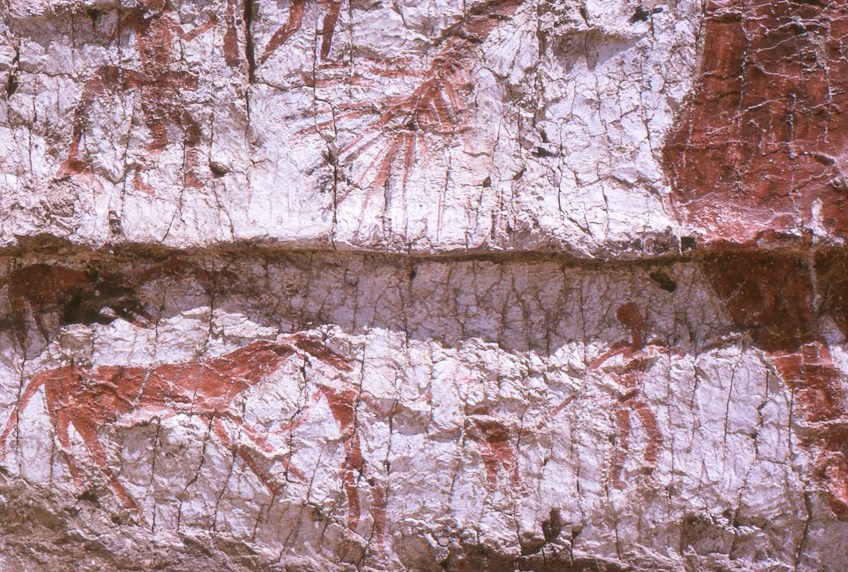
After the Ice Age ended approximately 10,000 BC, herds of animals began their migration toward the north. This was also a pivotal moment in art history since it marked the disappearance of cave art and the preference of humans for a more refined way of living. This refined way of living was accompanied by a preference for polished tools over rough stone tools.
The Neolithic Era Around the World
Another fact to note is that the Neolithic period is a broadly defined period that is only seen through the emergence of specific factors indicating development or a shift from the Paleolithic to the Neolithic and not due to strict time placements. The Neolithic era began at different times in different countries across the world. Below is a table showing the rough estimates for the different periods for each Neolithic age in different parts of the world.
| Location | Neolithic Time Period |
| Americas | 2,500 BC – 500 AD |
| Northern and Western Europe | 4,000 BC – 1,800 BC |
| Central Europe | 5,500 BC – 2,000 BC |
| Southeast Europe | 7,000 BC – 2,500 BC |
| East Asia | 6,000 BC – 2,000 BC |
| Africa, Near East, and Southeast Asia | 8,000 BC – 2,500 BC |
Neolithic Art
Art that emerged from the Neolithic era was primarily centered on the development of sculpture and design as decoration on various vessels, paintings, and object surfaces. Neolithic art from around the world was also exposed to various human developments such as the potter’s wheel and increased demand for elegant objects, which indicated a rise in the development of artistic preferences around the globe. Below, we will examine different types of Neolithic art in the form of sculptures and drawings.
The different types of art found in the Neolithic period include sculpture, megalithic structures, monumental architecture, and archaeological sites that contain various art objects specific to the culture and community that once occupied these spaces.
Art As Social Practice
Neolithic art has also been found to signify more than just art forms emerging from humans’ prioritization of ceremonial practice, religion, agriculture, and cultural development. The process of making may have also been a social practice, as found in a Spanish Neolithic painting dating back to around 7,000 BC at the Los Machos site.
It is believed that the painting was made by two artists; a male in his thirties and a younger woman.
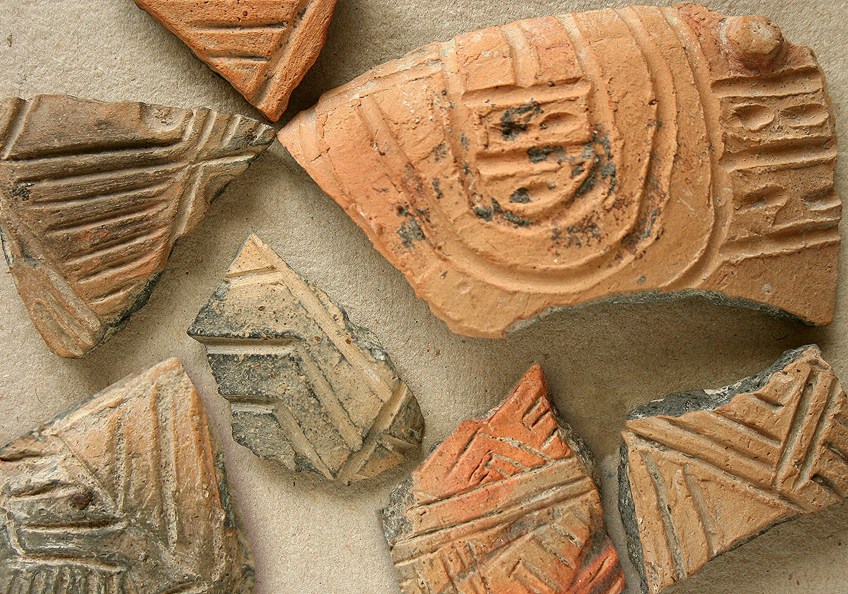
The painting displayed markings of circular, geometric, and anthropomorphic designs. The discovery of two artists who created one work indicates that art was a collaborative social process that perhaps formed part of a custom or social ritual, perhaps for bonding as there were no signs of Shamanism involved.
Neolithic Sculpture
Although the pottery of the Japanese and Chinese predate the pottery discovered under the Neolithic art period, the appearance of ceramic art in the Near East is an incredibly fascinating art form from the Neolithic era that should catch your attention. The Neolithic sculpture from the Near East can be divided into four periods; the Hassuna, Halaf, Ubaid, and Uruk periods. The sculptures began as simple low-fired pots, which were undecorated and untreated. The Halaf age saw the beginning of intricate designs, burnishing, and incisions.
The Ubaid age gave rise to the potter’s wheel and it was here that pottery had become revolutionized.
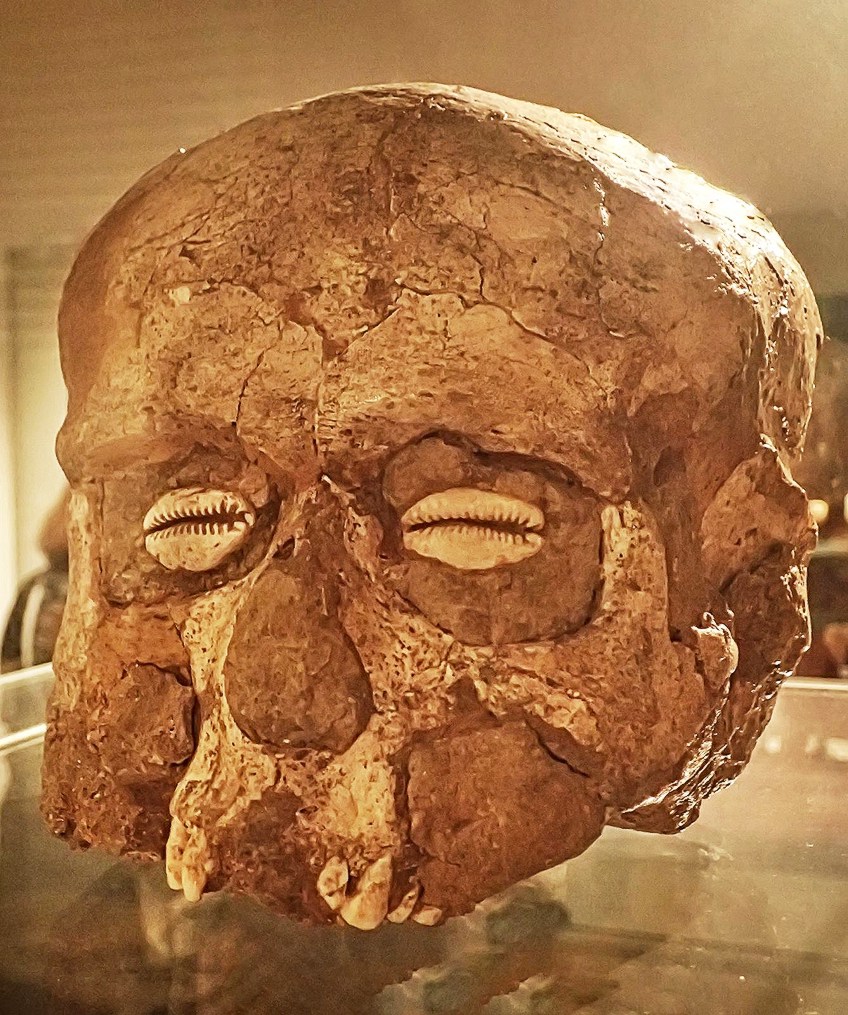
This allowed for an increase in craftsmen and mold makers to cater to the increasing demand for different shapes of vessels. In India, pottery emerged around 5,500 to 4,800 BCE during the Mehrgarh periods II and III. Europe witnessed the beginning of clay-fired objects during the Paleolithic era. Africa on the other hand contained pottery that dates as old as 9,500 BCE found in Central Mali. Below, we will take a look at some of the best examples of Neolithic sculptures from around the world.
The Oceania region includes art from Australia dating to 6,000 BC, which features paintings of crocodiles and saltwater fish and indicates signs of the rising seawater levels that eventually resulted in the formation of the Torres Strait that separates New Guinea and Australia.
The earliest stone sculptures from New Guinea appear around 8,000 BC and contain imagery of porcupine-like creatures, birds, and various other subjects presented as decorative mortars and pestles, believed to serve different ritualistic functions.
Susa Platter (9th Century)
| Date | 9th century BC |
| Medium | Ceramic clay paste, metallic luster decoration on opaque glaze |
| Dimensions (cm) | 4.7 (h) x 25.8 |
| Where It Is Housed | Musée du Louvre, Paris, France |
This delicately decorated platter originated from the Susa region in Iran and now forms part of the Islamic art collection at the Louvre Museum in Paris. The platter is seen embellished with a metallic luster coating, which was a dominant form of decoration seen in many ancient Islamic sculptural artworks. The process involved adding various metallic oxides to a white surface and after firing the object, the oxides would turn into a shiny reflection. This technique was utilized from the 9th century up until the 19th century and evolved into different variations.
This platter also showcases the polychrome luster method, which makes use of different luster colors possibly obtained by using different proportions of silver and copper in the metallic oxide.
With agriculture came the baking of clay, which allowed for the creation of utensils. Two types of earthenware, black and red ceramics, were dominant in Iran around 4,000 BC. As the means of sculpture and decoration evolved in Iran, the designs took on more geometry and resulted in a more decorative style.
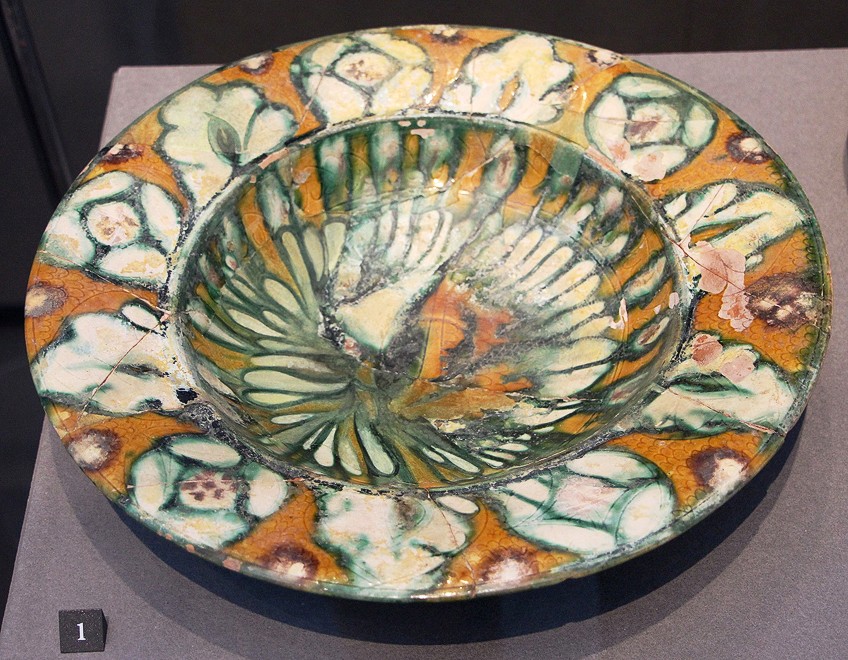
The prohibition on the use of vessels made out of precious metals meant that the market for luxury ceramics had widened and this resulted in the production of stylized lusterware objects with high-quality paints and glazes across the Persian Empire. The pottery of Susa existed mainly within the Uruk period within the Sumerian Uruk culture and included monumental architecture, cylinder seals, and proto-writing.
Approximately 2,000 pots were discovered in a Susa cemetery, most of which are now found at the Louvre. One famous example of a vessel recovered from the cemetery is the Bushel (beaker) with the ibex motif.
Seated Female (5,600 – 5,000 BC)
| Date | 5,600 – 5,000 BC |
| Place of Origin | Syria or Mesopotamia |
| Medium | Ceramic, paint |
| Dimensions (cm) | 5.1 x 4.5 |
| Where It Is Housed | Metropolitan Museum of Art, New York, United States |
This clay sculpture of a seated female figure with no head belongs to the Halaf culture and dates to approximately 5,600 to 5,000 BC. This Neolithic sculpture showcases a strong emphasis on the sexual features of the figure as opposed to its identity.
The figure is seen seated with her thighs stretched out in submission and her arms resting below her breasts.
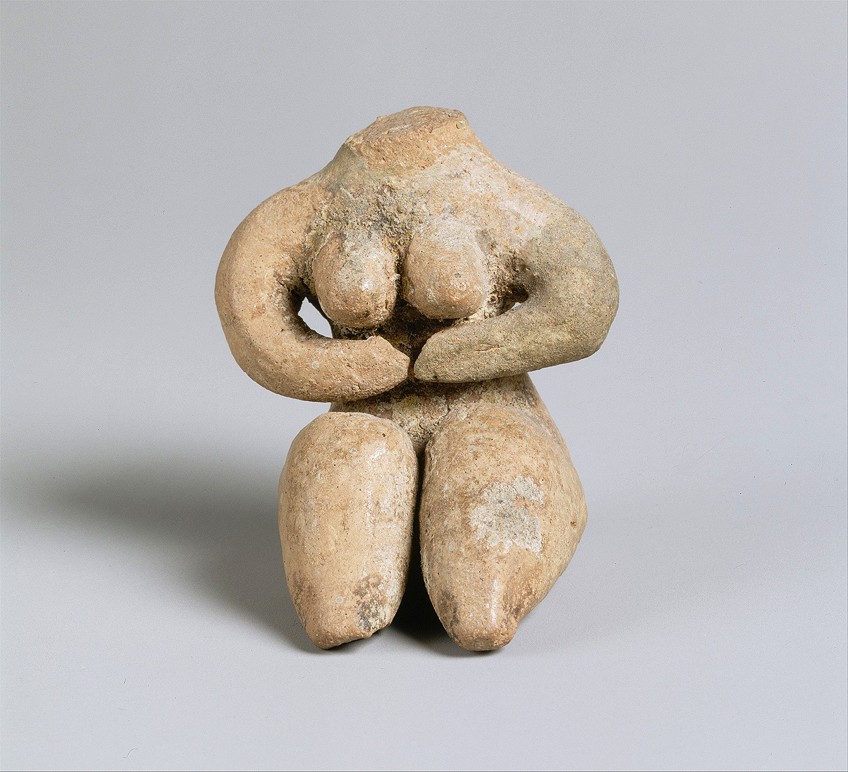
In similar sculptures of a seated woman with a head, the head is depicted as a large elongated nose-like feature with minimal details on the other facial features. The nude sculpture is believed to be associated with an object symbolizing fertility and is a conventional sculpture found across other regions such as Anatolia and northern Syria.
During the period of production of this sculpture, the farming societies that emerged in Syria and northern Mesopotamia were known to have created some of the best pottery pieces ever seen from the Near East.
Many Halaf sculptors achieved high levels of pottery quality and sourced their clay and resources from their neighbors to develop their skill sets and produce some of the most elegant designs. The Halaf people also created many stamp seals and amulets showcasing their talent in geometric design.
Dark Green Stone Ram (5,000 – 1,700 BC)
| Date | 5,000 – 1,700 BC |
| Place of Origin | China |
| Medium | Serpentine |
| Dimensions (cm) | 7.3 x 5 x 11.4 |
| Where It Is Housed | National Museum of Asian Art, Washington, D.C |
One of the best examples of Neolithic sculpture comes from Chinese Neolithic art as seen above in the serpentine green ram sculpture dating back to 5,000 BCE. The first examples of jade were found in the Yangtze River and derived from the Majiabang, Songze, and Qingliangang cultures. Many jade objects were believed to be associated with ceremonial objects and one such example was the cong, which is a cylindrical tube covered in a rectangular block symbolizing the yin (female, square, earth) and yang (male and heaven).
This green ram sculpture was crafted with bold directness and is seen standing on short stumpy legs. The head and neck of the ram also appear to be sculpted in a fluid-like manner with its fore and hind legs being described as “smooth undulating planes”.
The creature stands out with its curled horns and although the eyes are not visible, there is a straight groove in place for its mouth. Other types of Neolithic art from the Chinese Neolithic art era include ceramic art of the early Neolithic period dating between 7,500 and 5,000 BC, painted pottery as an art form, silk making, the Jiahu carvings, and bone flutes.
Towards the middle Neolithic art era, between 5,000 and 4,000 BC, Chinese art had transitioned into deep-bodied jugs, amphorae, and sculptures characterized by red and red-brown ware. Towards the East, sculptors employed clays of finer texture and produced sculptures such as sand-tempered pots with comb decorations, incisions, and bands. The lower Yangtze region gave rise to charcoal-tempered pottery, including cauldrons, utensils, Chinese lacquerware, and various objects with bird designs carved on ivory and bone.
The late Neolithic period dating between 4,000 and 2,000 BC was characterized by pottery with more delicate features, including polished ceremonial sculptures, burnished bowls, jade amulets, extremely thin goblets, ceramic whorls, classic black and orange designed bowls, and painted pottery featuring sinuous lines, spirals, and dots.
Neolithic art from this period in Chinese sculpture was more refined in design, color, and experimentation with shape.
Chinese ceramicists had gained quite a reputation for their mastery of sculpture, and by 3,000 BC, the elegance of Chinese sculpture was at its pinnacle. Other designs in sculpture consisted of gourd-shaped panels, zoomorphic figures, radial spirals, and sawtooth lines. The Longshan culture that existed between 3,000 and 2,000 BC produced eggshell-thin black pots and displayed incredible proficiency with the addition of handles, legs, and spouts to vessels.
Tumba Madžari Female Figure (c. 8,000 BC)
| Date | c. 8,000 BC |
| Place of Origin | Macedonia |
| Medium | Stone |
| Dimensions (cm) | Varied |
This Magna Mater or sculpture of the Great Mother goddess is one of the most famous Macedonian art objects. Around 38 other figures were found in the country with the largest concentration situated in Pelagonia. The goddess was believed to have been a deity that was worshiped for her role as a woman in life and was commonly associated with the earth. Women were viewed as blessed with the power of fertility and were granted life, protection, and food.
The most famous goddess sculptures were found in the valley of Skopje, near lake Ohrid in Vardar.
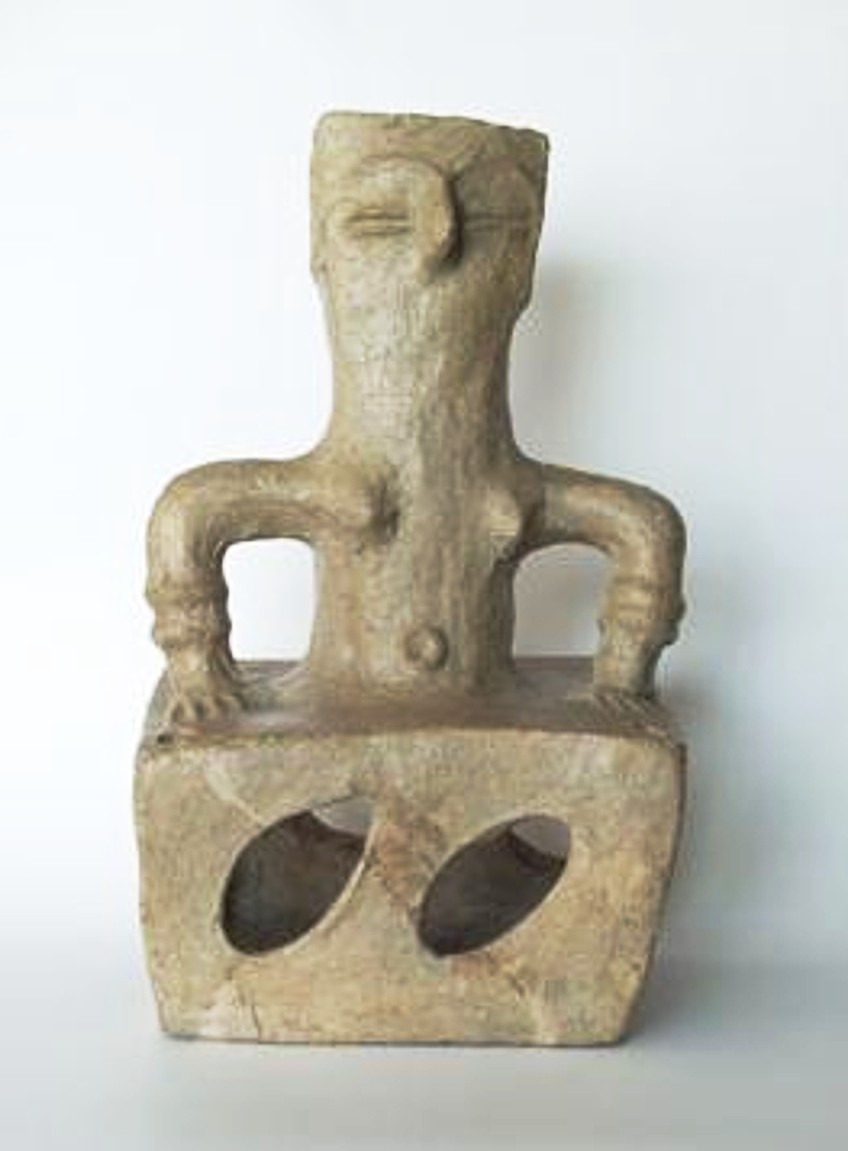
The valley was home to one of the most popular settlements called the Tumba Madzari, inhabited between 6,000 and 4,300 BC and considered one of the most important Neolithic communities. These sculptures of the goddess formed part of a cult called the Cult of the Great Mother Goddess.
Neolithic Drawings and Designs
Neolithic art also appears in Australia, Africa, and Oceania regions in the form of petroglyphs, rock art, Neolithic drawings, and minimal cave paintings. The most famous examples of Neolithic drawings can be seen in the Western Cape of South Africa in the Elands Bay cave, which features numerous hand stencils dating to around 4,000 BC. Below, we will take a look at some famous examples of Neolithic drawings from around the world.
Cairn of Gavrinis (4,250 – 4,000 BC)
| Date | 4,250 – 4,000 BC |
| Medium | Orthostat sanding stone |
| Dimensions (m) | 50 (d) x 14 (corridor) x 8 (h) x 4 (slab) |
| Where It Is Housed | Larmor-Baden, France |
Also known as the Sistine of the Neolithic era, the Cairn of Gavrinis is a historical landmark site situated in Larmor-Baden, France, and is best known for its engraved Neolithic drawing protruding from the surface. Among the motifs depicted are images of bows, axes, and spiral markings, to which no special meaning has been attributed. The Cairn of Gavrinis is said to have been established between 4,250 and 4,000 BC and once served as a funerary site.
Approximately 29 slabs of stone that constitute the megalith structure are engraved with intricate drawings that consist of curved and straight lines combined in a bizarre way.
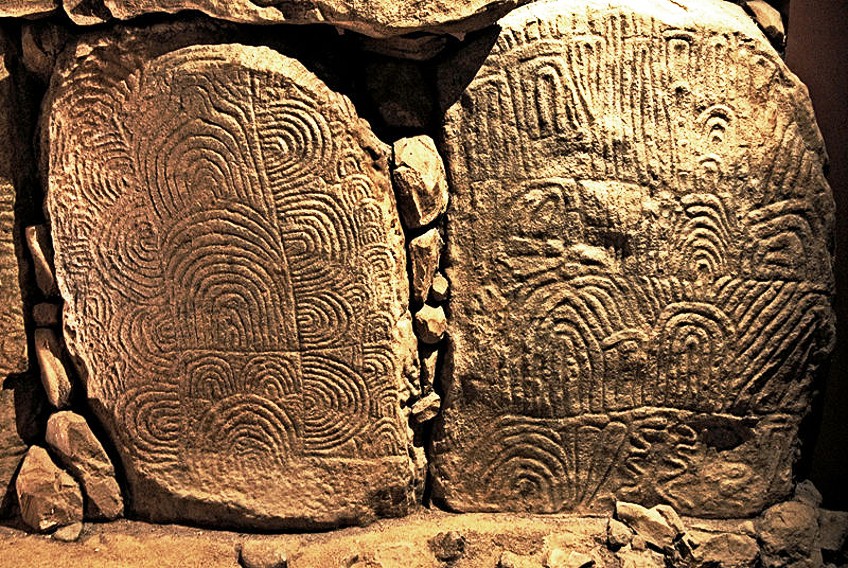
What is even more fascinating is the lengths that the Neolithic people of the port once went to, to acquire the stone slabs since a few slabs seem to have originated from other areas as far as four kilometers away, weighing around 23 tons. The Cairn of Gavrinis is perhaps one of the earliest and most fascinating examples of European Neolithic art. The entrance of the stone mound was closed off around 3,000 BC and the mound was eventually transformed into a hillock.
The mound is also a classical example of Neolithic stone architecture.
Drawings in Val Camonica (5,500 – 3,300 BC)
Val Camonica is the central valley of the Alps in Italy and is home to some of the most interesting examples of Neolithic drawings. Art during this period in the Camonica valley depicted imagery of human figures and many geometric shapes such as circles, rectangles, and dots. Other compositions include anthropomorphic petroglyphs.
The Oranti figures are called the praying figures and are still a subject of debate on whether they can be classified under the Neolithic or Bronze age.
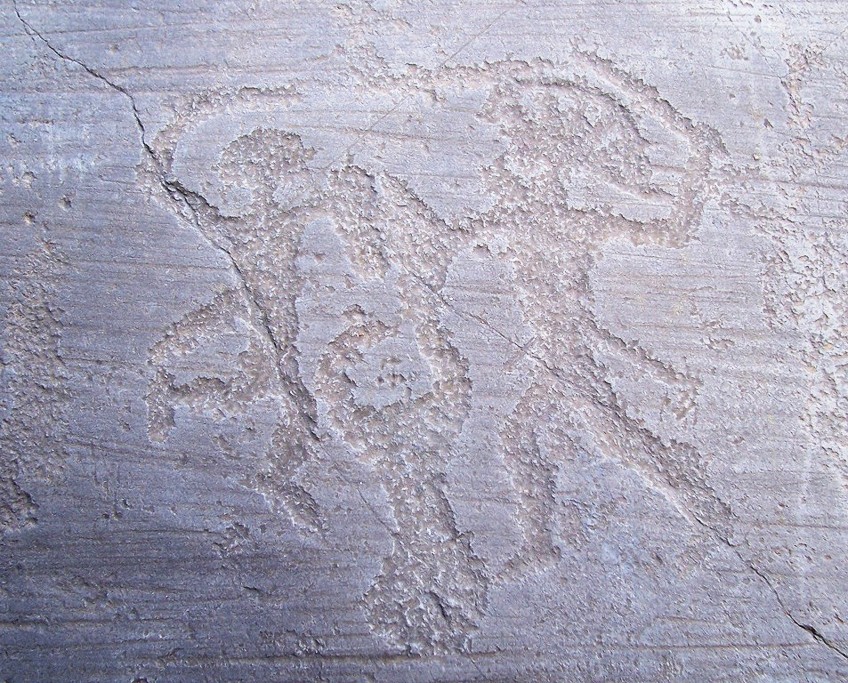
Representations of plowed land can be attributed to the Neolithic copper age stage of art in this period. The Camunian II period (falling under the Neolithic era of this region) also saw the beginning of the worship of domestic animals like dogs.
Other Forms of Neolithic Period Art
Other forms of Neolithic art included megalithic architecture as seen in the Egyptian pyramids and other famous structures such as the Gobekli Tepe in Southeast Anatolia, Turkey, a fertility cult center known as the Ggantija Temple complex, and the Stonehenge stone circle. Megalithic architecture as noted in the examples above suggests that a tremendous amount of labor was required to construct such structures and coincided with multiple complex religious belief systems.
Art of the Neolithic period is considered to be heavily connected to religion and humanity’s investment in the supernatural.
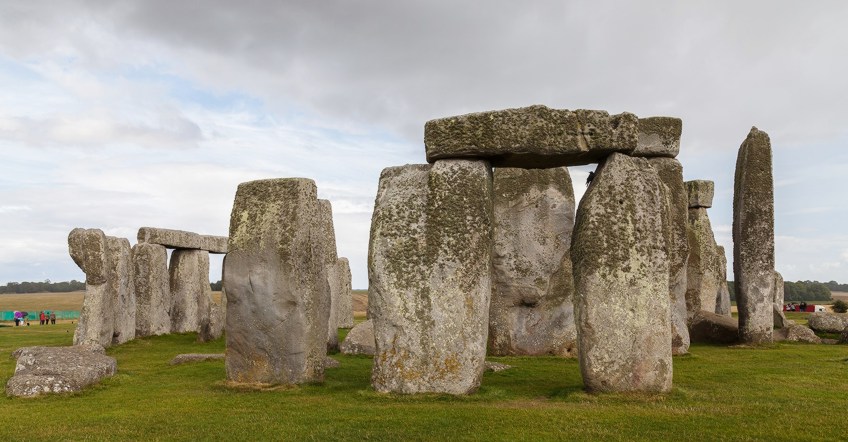
Other megalithic structures allude to man’s awareness of the environment and pay special attention to the design and architecture of ceremonial chambers and monuments of burial sites, which are often aligned with solar and lunar events. The construction of megalithic structures shows us the first signs of man’s attempt to create complex objects and structures involving hefty processes of cutting and piecing together large masses of stones without cement.
Important Neolithic Art Sites
As you might have derived by now, Neolithic-period art across the world progressed from simple structures in sculpture to additive decorative elements that enhance preceding art objects. Below, is a list of some of the most important sites where Neolithic art has been discovered and what was contained in these sites that make them so important.
Çatalhöyük (7,500 – 5,700 BC)
Çatalhöyük is one of the most important archaeological sites, which proved fruitful in the excavation of exceptionally well-preserved Neolithic-period art. Most of the structures were made out of mud bricks and most rooms were found to be in a clean condition. Now declared a UNESCO World Heritage Site, this area contained colorful Neolithic drawings and paintings on the interiors and exteriors of walls.
Approximately 100 clay statues of women, including the 7,000 BC Enthroned Goddess of Çatalhöyük were found here, sculpted in blue and brown limestone with marble, basalt, terracotta, alabaster, and calcite.
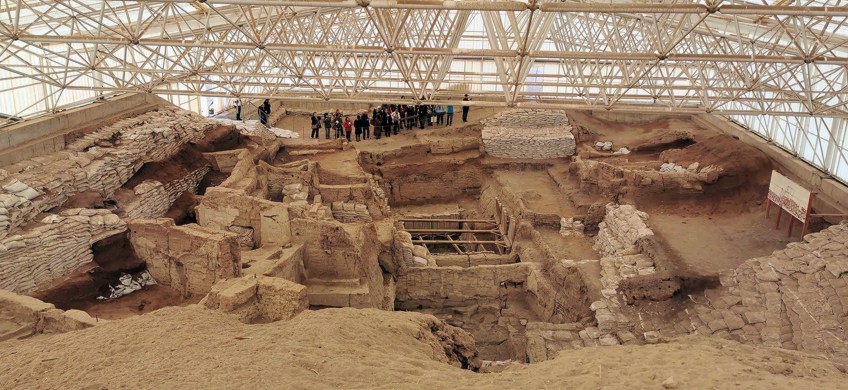
An additional 1,900 animal figurines were also unearthed with heavily decorated chambers believed to be shrines. The murals on the walls depicted hunting scenery and images of men, phallic symbols, and stags, and even contained the world’s first landscape painting. While the cultivation of crops was highly important, the people of Çatalhöyük also still kept the significance of hunting and gathering in mind.
Mehrgarh (7,000 – 2,500 BC)
Mehrgarh is a 495-acre site situated in Pakistan on the Kacchi Plain of Balochistan and is famous for being one the earliest known hubs of Neolithic farming and South Asian animal husbandry. The site is also renowned for its massive collection of over 32,000 artifacts and a wide range of Neolithic pottery.
Other objects discovered at the site include objects crafted from limestone, sandstone, turquoise, lapis lazuli, and sea shells.
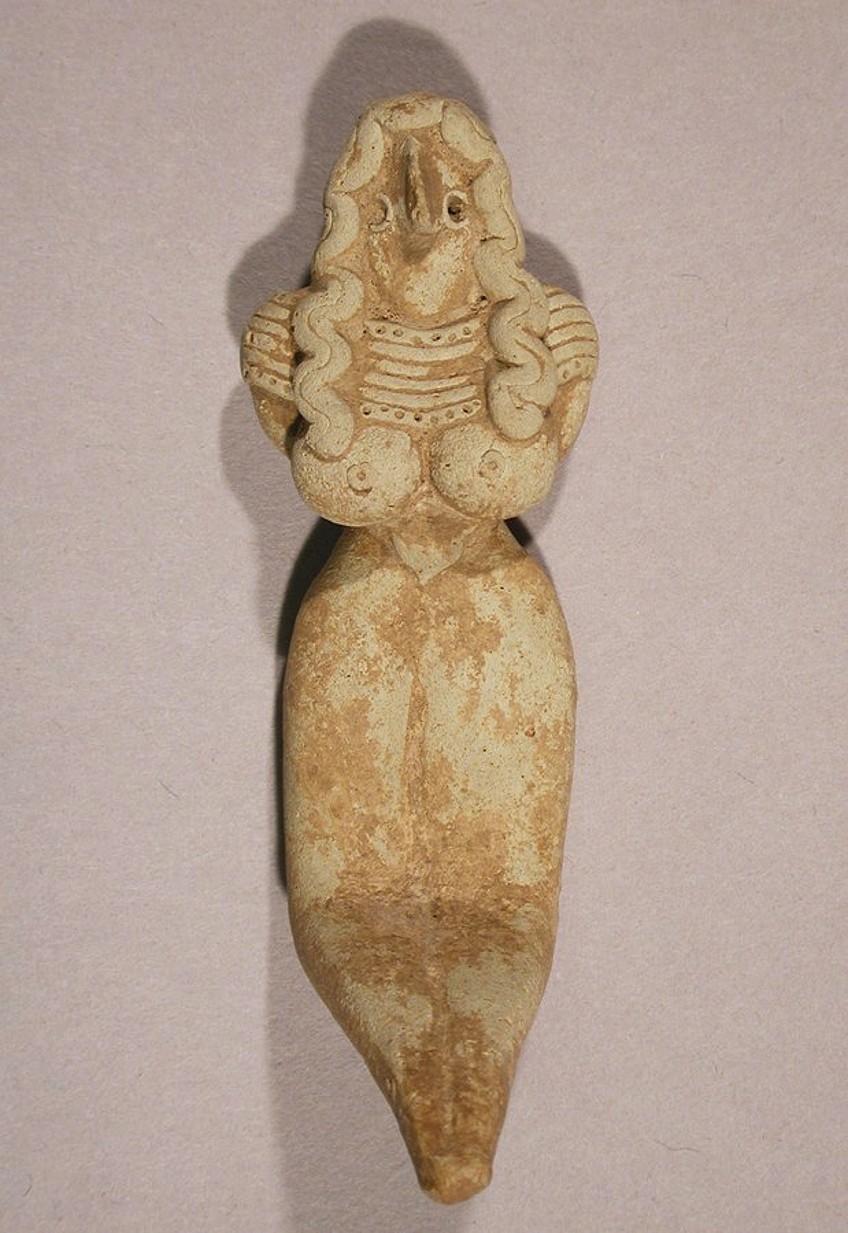
This site is also significant since it is the first site to display signs of ceramic cult figurines of South Asia, which were produced before pottery emerged. Around 2,000 BC is when the production of pottery began to decline due to the spike in preference for copper and bronze objects.
Neolithic-period art is extremely diverse and offers a rich insight into the development of sculpture and the progression of art across the world. This time period is perhaps the best source of inspiration for many unique artworks and design elements that are still prominent in contemporary art today. Other sites worth studying in light of Neolithic art and monumental architecture include the Ggantija temple complex in Malta, the Bru na Boinne complex in Ireland and the rock art of the Green Sahara .
Frequently Asked Questions
What Is Neolithic Art?
Neolithic art refers to art that was created roughly between 10,000 and 2,000 BC and is informed by the emergence of farming, agriculture, and technology development, which influenced the art forms that were produced.
Why Is Neolithic Art Important?
Neolithic art is important because it gives us insight into the artistic development of people and communities across the world and was an important period for understanding the development of sculpture and pottery in the Neolithic world. Neolithic art is also important as it provides information on the culture and religious belief systems of early humans as it pertained to the transition from hunter-gatherers to the development of civilizations and a more organized approach to art.
What Are the Predominant Art Forms of Neolithic Art?
The predominant art forms of Neolithic art include ceramic art, pottery, pottery painting, intricate geometric designs, decorative elements on clay vessels, fertility figurines, megalithic structures, and large-scale engravings.
What Is the Most Famous Neolithic Sculpture?
The most famous Neolithic sculpture is considered to be Stonehenge, which is a circular arrangement of large stones created on the Salisbury Plain from around 3,000 BC to the second century BC. Stonehenge is also known as the most important site of human development.
What Are the Main Themes of Neolithic Art?
The main themes featured in Neolithic art include themes of fertility and agricultural deities. Other themes that feature in Neolithic art are animals, decorative motifs, and geometric shapes.
Jordan Anthony is a Cape Town-based film photographer, curator, and arts writer. She holds a Bachelor of Art in Fine Arts from the University of the Witwatersrand, Johannesburg, where she explored themes like healing, identity, dreams, and intuitive creation in her Contemporary art practice. Jordan has collaborated with various local art institutions, including the KZNSA Gallery in Durban, the Turbine Art Fair, and the Wits Art Museum. Her photography focuses on abstract color manipulations, portraiture, candid shots, and urban landscapes. She’s intrigued by philosophy, memory, and esotericism, drawing inspiration from Surrealism, Fluxus, and ancient civilizations, as well as childhood influences and found objects. Jordan is working for artfilemagazine since 2022 and writes blog posts about art history and photography.
Learn more about Jordan Anthony and about us.
Cite this Article
Jordan, Anthony, “Neolithic Art – Explore Fascinating Neolithic-Period Art.” artfilemagazine – Your Online Art Source. October 24, 2022. URL: https://artfilemagazine.com/neolithic-art/
Anthony, J. (2022, 24 October). Neolithic Art – Explore Fascinating Neolithic-Period Art. artfilemagazine – Your Online Art Source. https://artfilemagazine.com/neolithic-art/
Anthony, Jordan. “Neolithic Art – Explore Fascinating Neolithic-Period Art.” artfilemagazine – Your Online Art Source, October 24, 2022. https://artfilemagazine.com/neolithic-art/.


